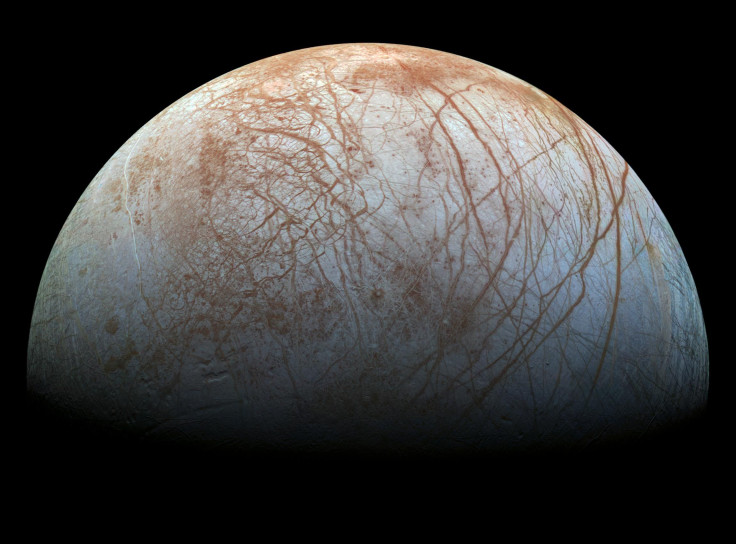Astronauts Exploring Moons, Asteroids Could Be Landing Spacecraft On Quicksand

Landing a spacecraft on an alien planet or another moon might be tricky because the ground could be like quicksand.
Scientists have looked at Jupiter’s icy moon Europa and other places in our solar system as being potentially habitable worlds that warrant further exploration. But new research suggests that a spacecraft touching down on Europa might have some trouble, whether its an unmanned probe or a ship carrying astronauts — the surface might be too porous to support the lander.
A study in the journal Icarus analyzed the light waves that have been seen coming from the surfaces of bright bodies in the solar system without atmospheres, including their reflectance and polarization, by studying aluminum oxide. According to the researchers, that powdered material imitates the dust called regolith that coats the space objects.
What they found was the particles had a void space higher than 95 percent, meaning that much of the aluminum oxide powder’s volume was taken up by empty space between the fine grains of its particles.
The photo properties of the powder matched observations taken of bright, atmosphere-less worlds like Europa, so the scientists suggest that its consistency could speak to that of those space places.
In addition to the popular Europa, the analysis applies to bodies like asteroids and Europa’s neighbor moons Io and Ganymede.
“This corresponds to material that would be less dense than freshly fallen snow, raising questions about the risk of a Europa lander sinking into the surface of the Jupiter satellite,” according to a statement from the Planetary Science Institute.
Although the findings suggest a porous surface that could be treacherous for a spacecraft, the scientists were basing their research on observations that only account for the outermost layer of the moons and asteroids — what is lurking beneath is still a mystery.
“Before the landing of the Luna 2 robotic spacecraft in 1959, there was concern that the moon might be covered in low-density dust into which any future astronauts might sink,” study researcher and PSI scientist Robert Nelson said in the statement. “We must keep in mind that remote visible-wavelength observations of objects like Europa are only probing the outermost microns of the surface.”
© Copyright IBTimes 2024. All rights reserved.





















